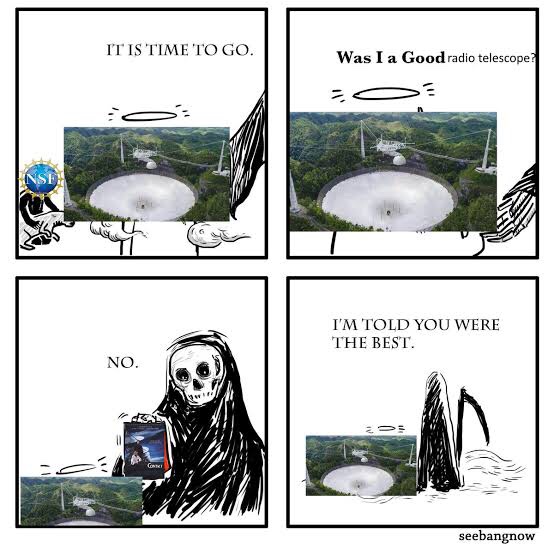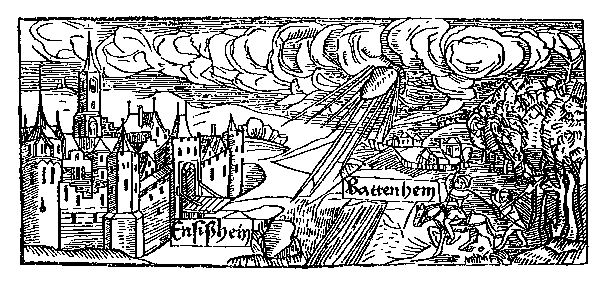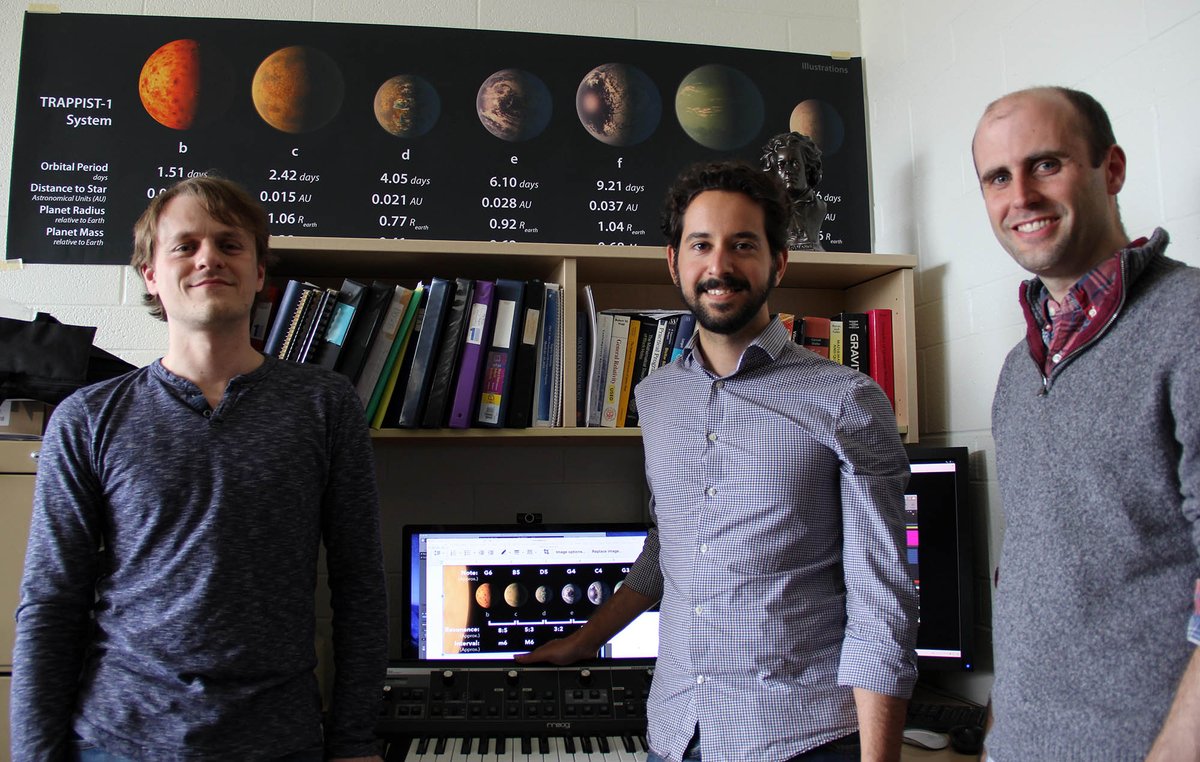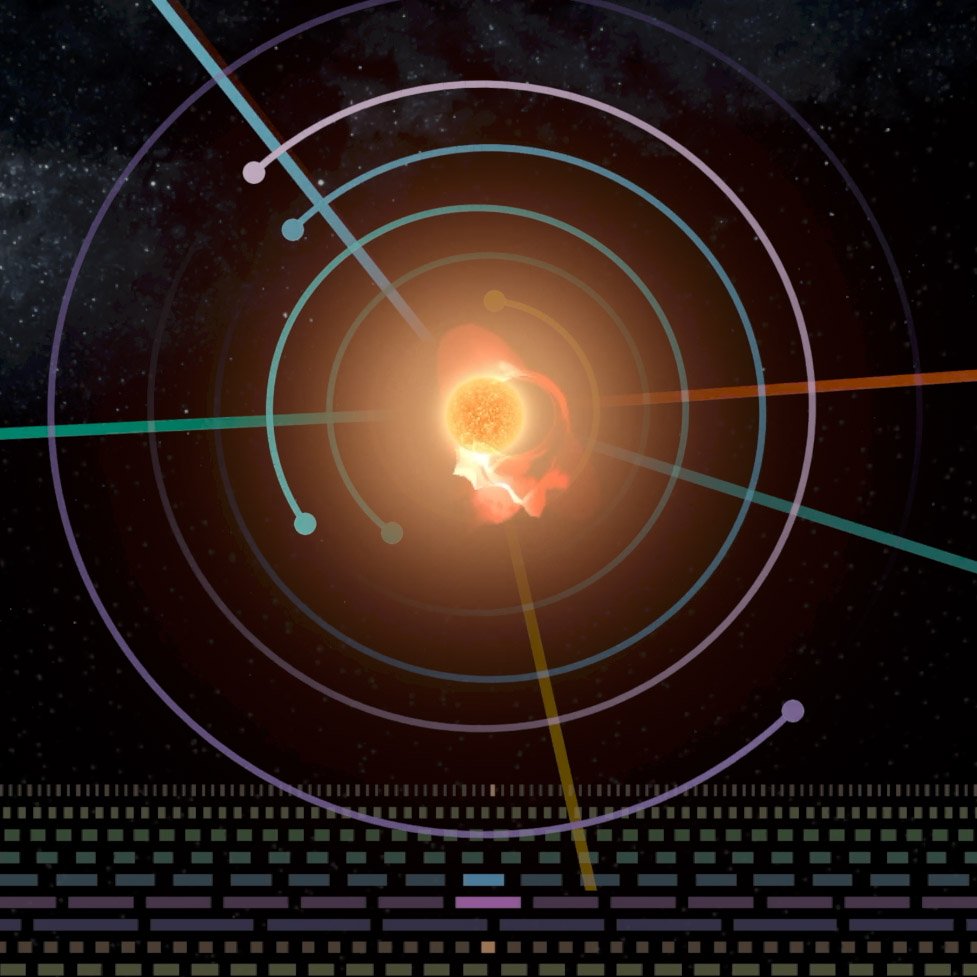
Many of you may have already heard, but I want to address the latest news on the Arecibo Observatory (@NAICobservatory)
This morning, @NSF announced that the telescope's instrument platform has collapsed onto the dish, irreversibly damaging it:
🧵 (1/n)
This morning, @NSF announced that the telescope's instrument platform has collapsed onto the dish, irreversibly damaging it:
https://twitter.com/NSF/status/1333772980539691008
🧵 (1/n)
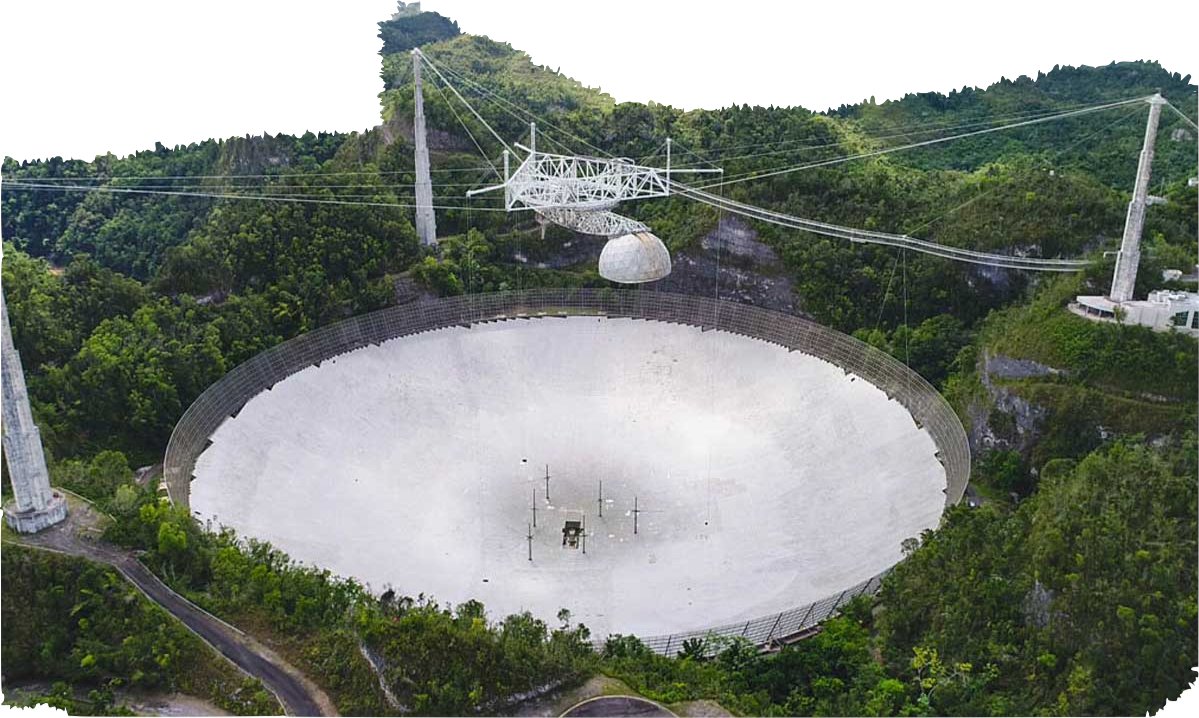
@NAICobservatory @NSF While Arecibo has suffered from hurricane damage and funding issues for a while, this is likely the final nail in the coffin for this * iconic * telescope.
An absolutely heartbreaking moment for Puerto Rico, the astronomy community, and all the fans of the observatory.
(2/n)
An absolutely heartbreaking moment for Puerto Rico, the astronomy community, and all the fans of the observatory.
(2/n)
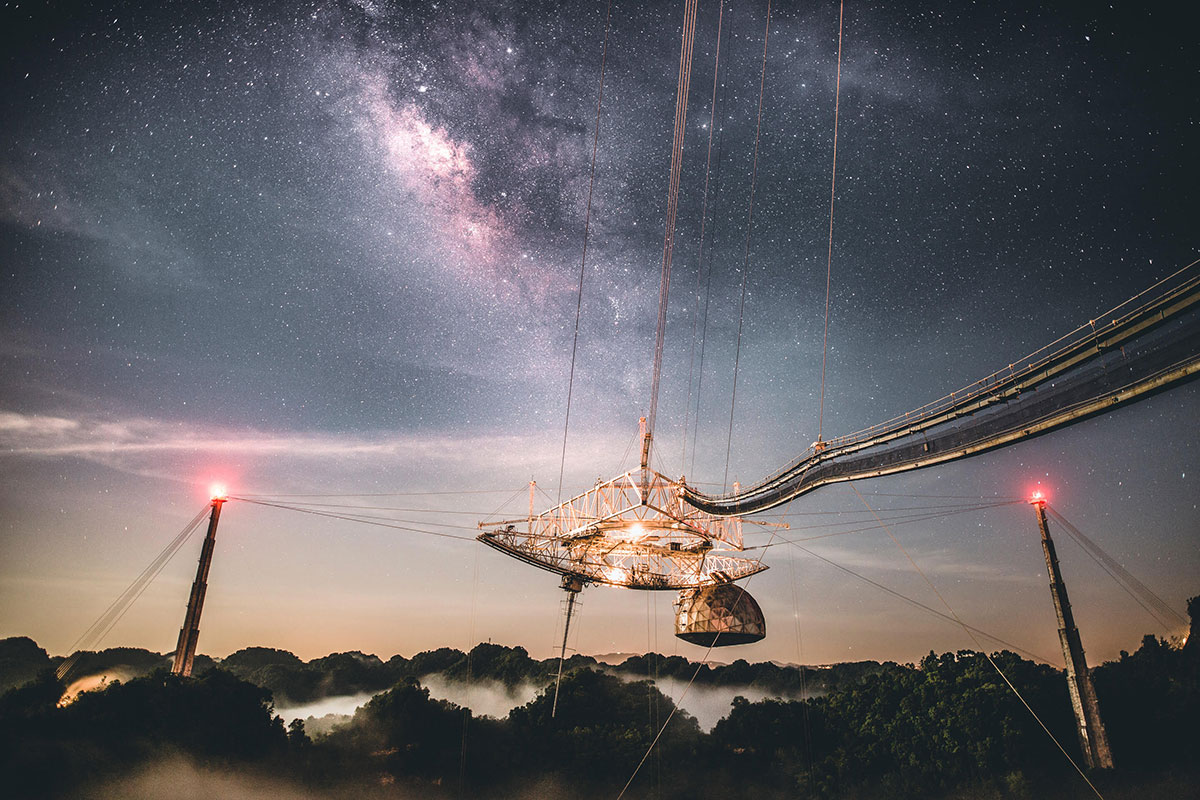
For decades, Arecibo has been a source of immense pride for communities across Puerto Rico, and I want to acknowledge all that it meant to so many people. 🥺🙏🏾
I HIGHLY HIGHLY recommend checking out #WhatAreciboMeansToMe for myriad personal stories about the telescope.
(3/n)
I HIGHLY HIGHLY recommend checking out #WhatAreciboMeansToMe for myriad personal stories about the telescope.
(3/n)
Today, I want to highlight some of the most significant discoveries made using Arecibo over its ~60 years of operation.
Put on your radio astronomy hats, because it's about to get nerdy! We have pulsars, planetary science, aliens and more!!! 🌟🪐👽🔭📻
(4/n)
Put on your radio astronomy hats, because it's about to get nerdy! We have pulsars, planetary science, aliens and more!!! 🌟🪐👽🔭📻
(4/n)
Arecibo is a radio telescope - it collects radio waves, not visible light.
Astronomy always relies on using various parts of the electromagnetic spectrum to give us different kinds of insight - @NASAHubble uses visible and infrared light, @chandraxray uses X-rays, etc!
(5/n)
Astronomy always relies on using various parts of the electromagnetic spectrum to give us different kinds of insight - @NASAHubble uses visible and infrared light, @chandraxray uses X-rays, etc!
(5/n)
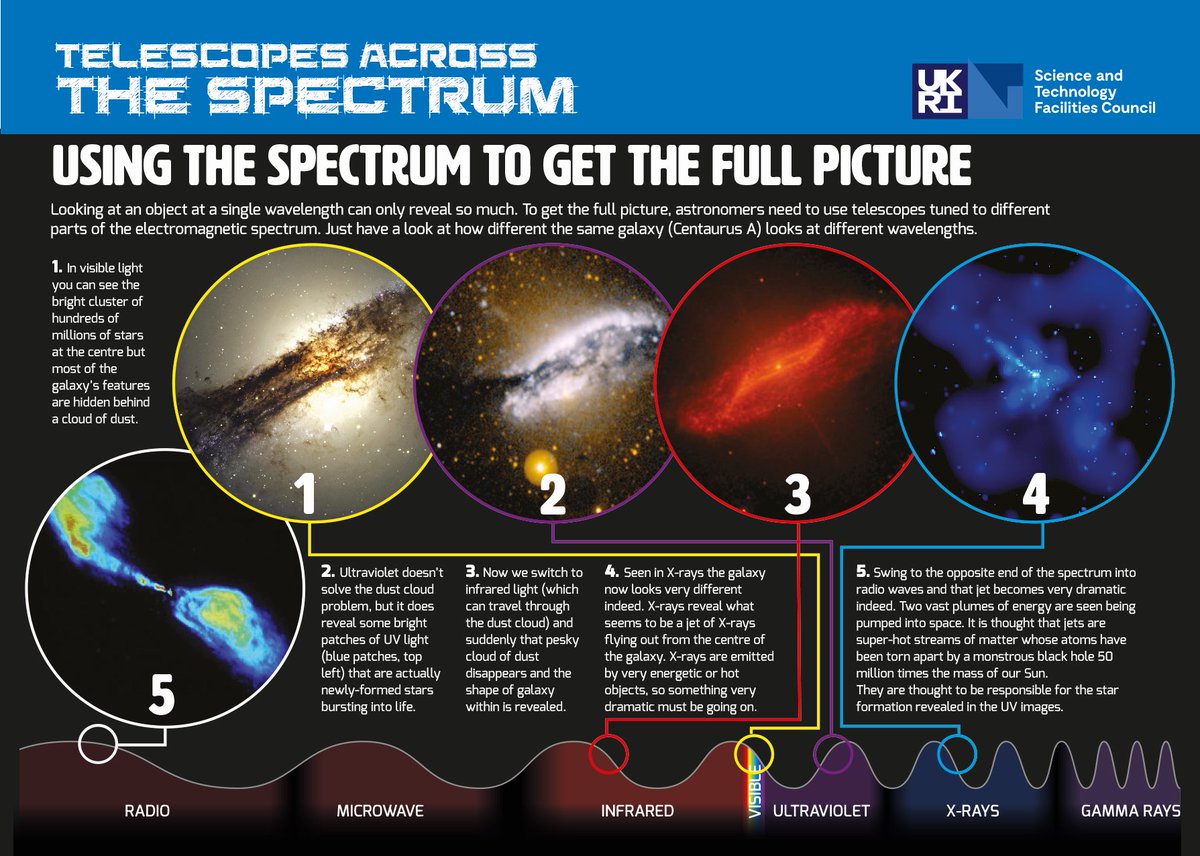
@NASAHubble @chandraxray 1967 brought one of the first major discoveries out of Arecibo:
Mercury's rotation period was measured to be 59 days, not 88 days as previously believed! It was one of the most precise modern studies of our innermost planetary neighbour.
(6/n)
Mercury's rotation period was measured to be 59 days, not 88 days as previously believed! It was one of the most precise modern studies of our innermost planetary neighbour.
(6/n)
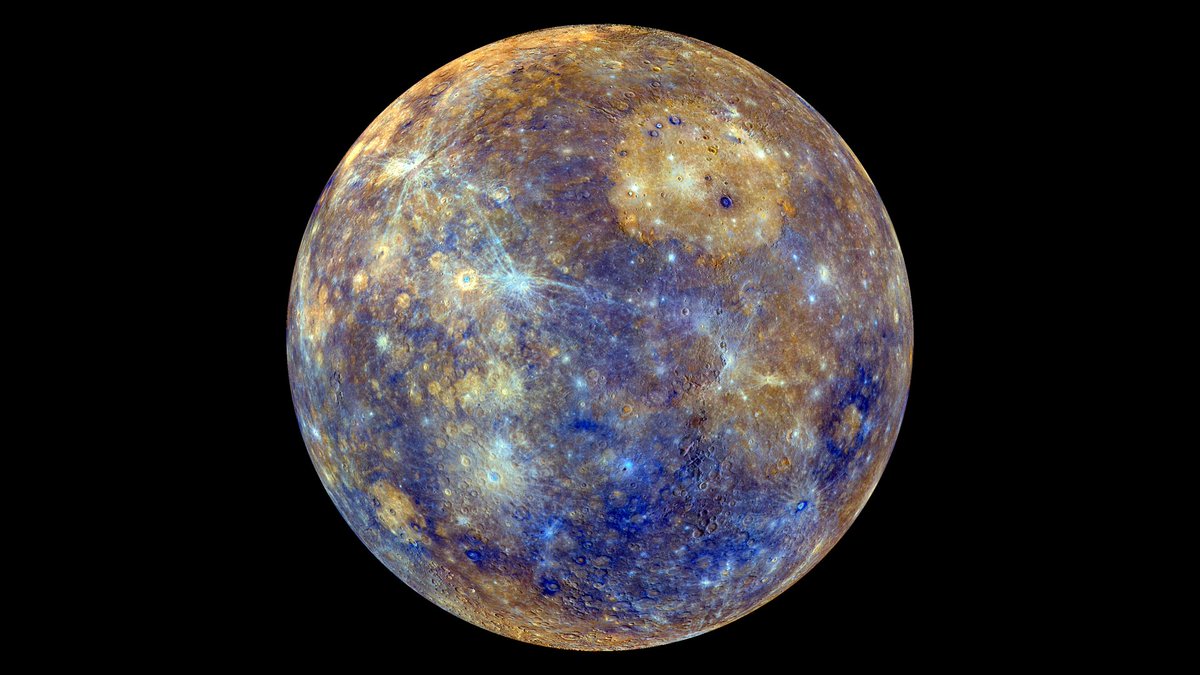
@NASAHubble @chandraxray The Crab Pulsar (within the Crab Nebula) had its rotation period measured in 1968 by Arecibo - it spins once every 33 MILLISECONDS!!!
This led to the first studies connecting pulsars to rapidly spinning neutron stars, the end products of stellar explosions.
(7/n)
This led to the first studies connecting pulsars to rapidly spinning neutron stars, the end products of stellar explosions.
(7/n)
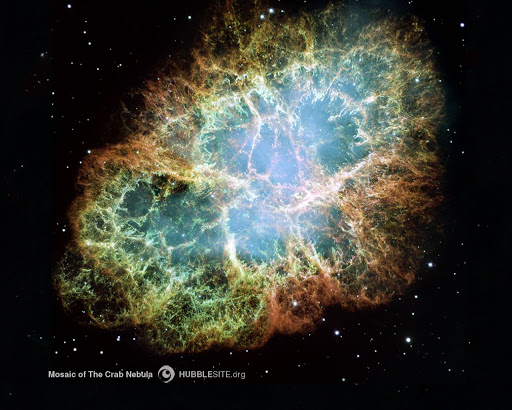
@NASAHubble @chandraxray In 1974, Arecibo was turned into a GIANT transmitter for SETI - the Search for Extraterrestrial Intelligence!!! 👽👾🛸
A single message was sent in the direction of the star cluster M13, carried on radio waves emitted by Arecibo. The message was coded in binary digits ...
(8/n)
A single message was sent in the direction of the star cluster M13, carried on radio waves emitted by Arecibo. The message was coded in binary digits ...
(8/n)
@NASAHubble @chandraxray ... and contained numbers, chemical formulae, graphics of human beings and the telescope, and more! (click on image below)
While it was a demonstration of technological ability rather than a serious way of contacting alien life, it was still historic for astronomy!
(9/n)
While it was a demonstration of technological ability rather than a serious way of contacting alien life, it was still historic for astronomy!
(9/n)
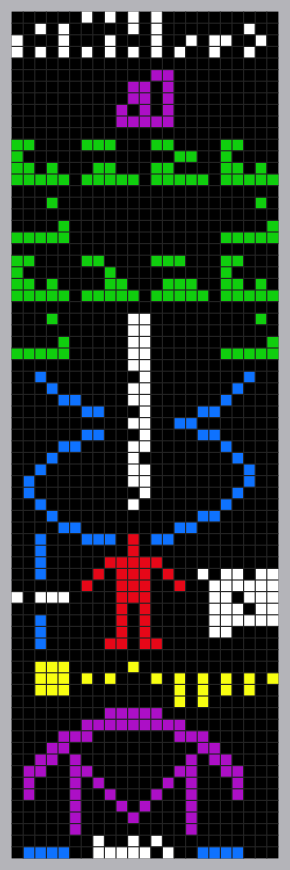
@NASAHubble @chandraxray Arecibo revisited Mercury in 1992 and found evidence for ice at the planet's north and south poles!!!
Despite the planet's SEARING daytime temperatures over 700F, ice still exists in shadows and nooks at the poles. This has been confirmed by probes since then.
(10/n)
Despite the planet's SEARING daytime temperatures over 700F, ice still exists in shadows and nooks at the poles. This has been confirmed by probes since then.
(10/n)
1992 was a big year for Arecibo - it was also involved in the detection of the FIRST EVER EXOPLANET 🪐🔭
While today we know of thousands of extra-solar worlds thanks to missions like Kepler, at the time this was a monumental discovery, leading to an explosion of ...
(11/n)
While today we know of thousands of extra-solar worlds thanks to missions like Kepler, at the time this was a monumental discovery, leading to an explosion of ...
(11/n)
... exoplanet science in coming years. In this case, Arecibo observed the pulsar PSR B1257+12, around which 3 planets were discovered, making them the first worlds we had ever observed outside our solar system.
(12/n)
(12/n)
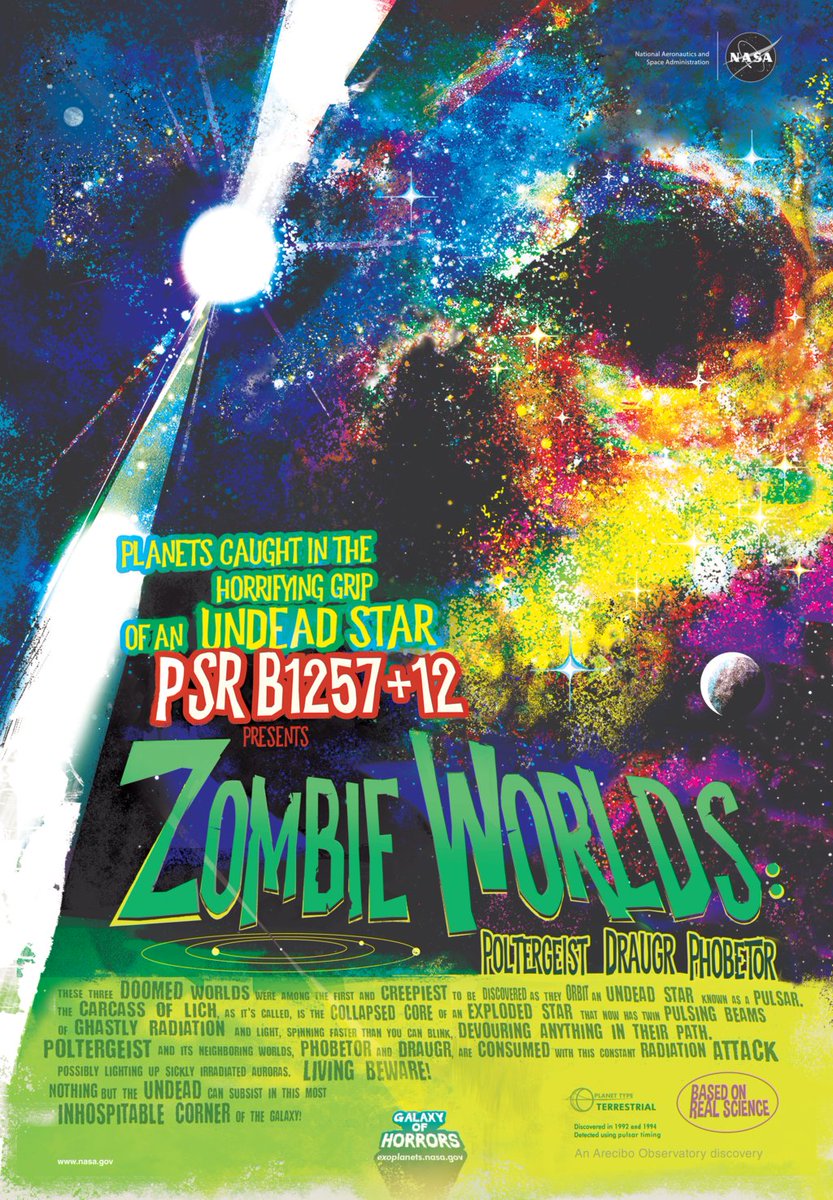
Recently, in 2016, Arecibo was used to detect the first ever *repeating fast radio burst (FRB).
FRB's are still a big mystery to astronomers - they are super quick bursts of radio waves originating from outside our galaxy. Their origins are still unknown!
(13/n)
FRB's are still a big mystery to astronomers - they are super quick bursts of radio waves originating from outside our galaxy. Their origins are still unknown!
(13/n)
Until 2016, Arecibo was also the LARGEST single-dish radio telescope in the world, measuring at 305m in diameter! This behemoth sits in a natural sinkhole located in Arecibo, Puerto Rico.
In July 2016, it was surpassed by the 500m FAST telescope in China, seen below.
(14/n)
In July 2016, it was surpassed by the 500m FAST telescope in China, seen below.
(14/n)
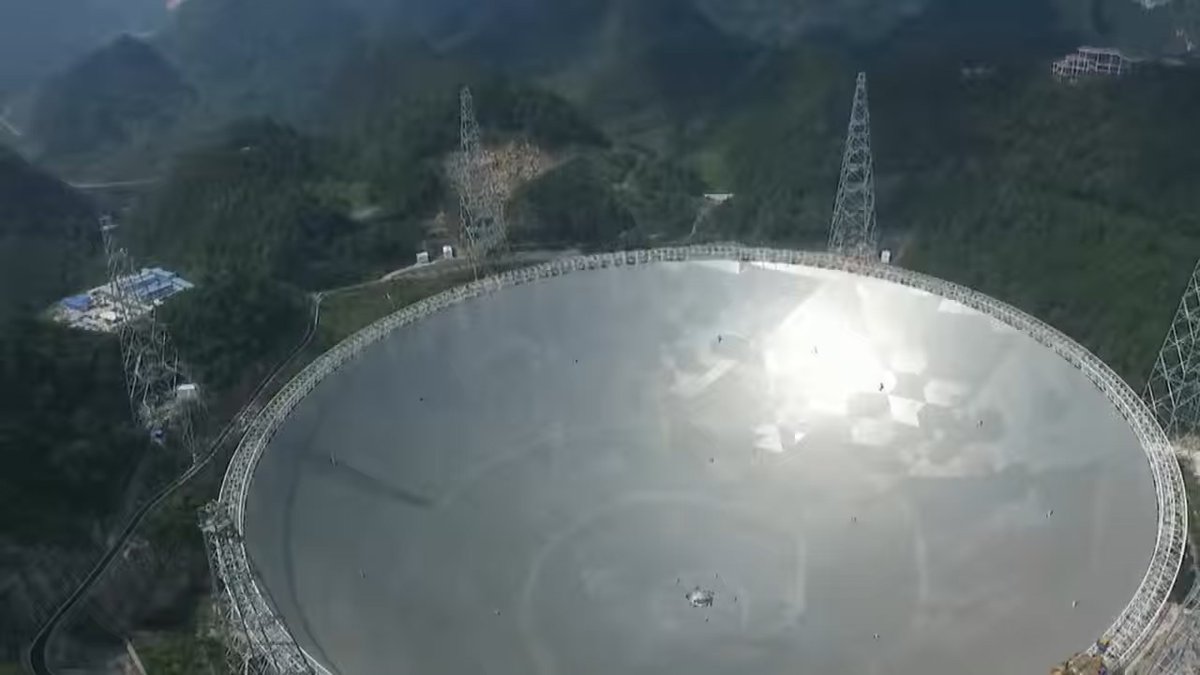
Due to its significance, Arecibo has also enamoured the minds of the public through popular media. It most prominently featured in both the book and movie Contact (by Carl Sagan). 📖🎬
(15/n)
(15/n)
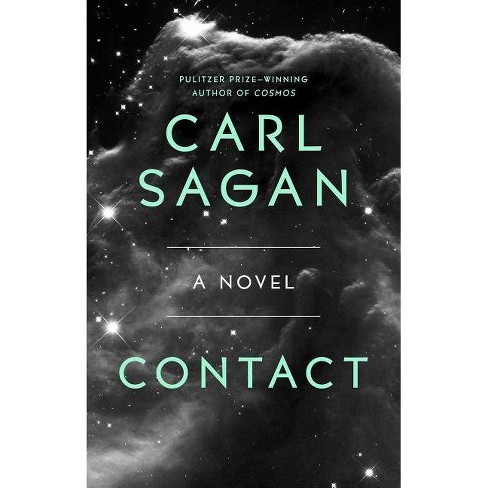
In 2015, I had the incredible privilege of observing at Arecibo as an undergrad; an experience that remains fresh in my mind to this day.
This observatory meant so much to me, and I will forever cherish the moments I got to spend there.
#WhatAreciboMeansToMe
(16/n)
This observatory meant so much to me, and I will forever cherish the moments I got to spend there.
#WhatAreciboMeansToMe
(16/n)
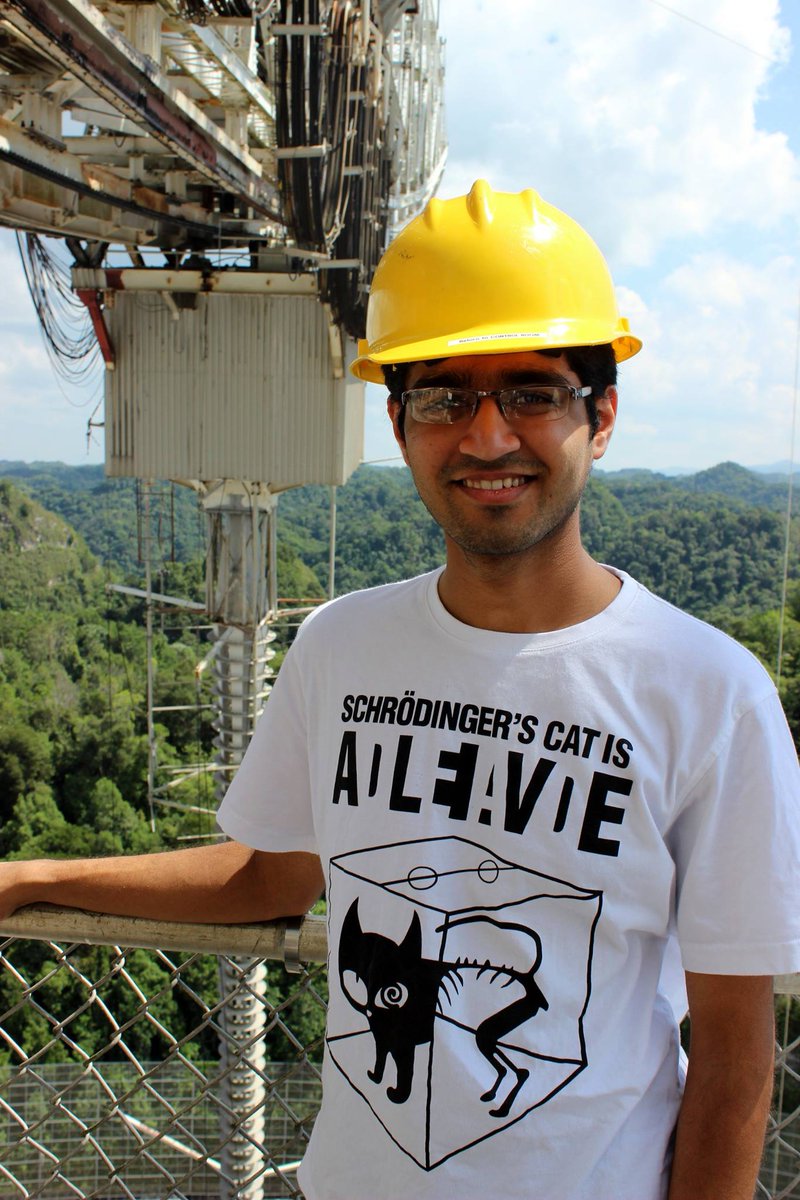
• • •
Missing some Tweet in this thread? You can try to
force a refresh
